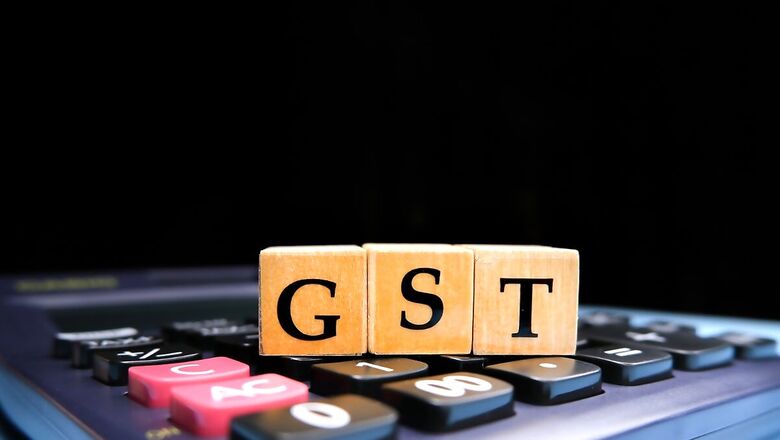
views
The group of ministers (GoM) on GST rate rationalisation, led by Bihar Deputy Chief Minister Samrat Chaudhary, has discussed tax rate tweaks on over 100 items, including lowering taxes on certain goods from 12 per cent to 5 per cent, to give relief to the common man, West Bengal Finance Minister Chandrima Bhattacharya said on Thursday.
The next meeting of the GoM is scheduled on October 20, Bhattacharya said, adding that rationalising taxes on bicycles and bottled water will be part of the discussion.
The six-member Group of Ministers (GoM), which had met on Wednesday, also took up the issue of tax rate cut on medical and pharma-related items in the 12 per cent slab and decided to discuss it in its meeting next month.
To make good the revenue loss that will be incurred on account of lowering the tax rate on such items, the GoM also discussed the possibility of raising tax rates on some items, including aerated water and beverages, from the current 28 per cent GST, plus cess.
Currently, goods and services tax (GST) is a four-tier tax structure with slabs at 5, 12, 18, and 28 per cent. However, as per GST law, tax of up to 40 per cent can be imposed on goods and services.
“The average tax rate under GST has fallen to 11.56 per cent in 2024. West Bengal has suggested that the decision taken at the 23rd meeting of the GST Council in which tax rates were slashed on 178 items by pruning the 28 per cent slab should be revisited. This would help to garner more revenues while at the same time give relief to common man by bringing items down to 5 per cent,” Bhattacharya told PTI.
The GoM would further deliberate on the views of its members in the October 20 meeting and place its recommendations before the GST Council, which is chaired by the Union Finance Minister and comprises ministers from all states and UTs.
She said items used by the common man should attract lower tax rates and moving food items from 12 per cent to 5 per cent slab would bring relief for them in terms of reduction in prices.
However, some items in the 18 per cent slab like hair dryers, hair curlers, and beauty or make up preparations could be reverted back to the 28 per cent slab.
“There was no discussion on pruning the slabs. The GoM had consensus that common man should get relief and it also converged that if tax rates are reduced on items for common man, then it should also look at means to make up for the lost revenue,” Bhattacharya said, adding that states cannot bear any reduction in GST revenue at this point of time.
On taxing bicycles, the West Bengal finance minister said it is an item used by the common man, while there are high-end products, too. “We will have to look at reducing the tax rate for those bicycles used by the masses. The GoM will further deliberate on it,” she said.
Currently, bicycles and its parts and accessories attract 12 per cent GST, while e-cycles attract 5 per cent tax.
The six-member GoM also includes Uttar Pradesh Finance Minister Suresh Kumar Khanna, Rajasthan Health Services Minister Gajendra Singh, Karnataka Revenue Minister Krishna Byre Gowda, and Kerala Finance Minister K N Balagopal.
Under GST, essential items are either exempted or taxed at the lowest slab, while luxury and demerit items attract the highest slab. Luxury and sin goods attract cess on top of the highest 28 per cent slab.
The average GST rate has fallen below the revenue neutral rate of 15.3 per cent. This has prompted the need to start discussions on GST rate rationalisation.
Niraj Bagri, partner at Dhruva Advisors, said, “The GoM meeting is underway to discuss rate rationalisation of GST rates. Since its introduction, GST has had a four-tier structure 5%, 12%, 18% and 28% (excluding precious metals and compensation cess). The debate is whether it can be reduced to a three-tier structure and one of the possibilities could be collapsing 12% and 18% to a single rate. Whilst it is definitely advantageous for the 18% bracket, it could imply goods/ services in the 12% bracket move to a new higher rate or to 5% rate.”
The current effective rate of GST is at 12% as against the revenue neutral rate of 15.3%. It would be a tough balancing act to ensure simplicity without compromising on revenue collection. A few other possibilities could be altering the other rates of 5% and 28% and arriving at a three-tier rate which does not result in revenue shortfall. There are no easy solutions, and it would be interesting to see whether the anti-profiteering provision which was expected to be phased out would get a new lease of life if there were significant rate changes intended to be carried out, he added.
In the 54th GST Council on September 9, 2024, the Council also formed a new GoM on GST rate reduction on medical health insurance set up, which will submit its report by October-end. FM Nirmala Sitharaman said the GST Council meeting to be held in November will take a call on reduction in rate on health insurance.
(With Inputs from PTI)


















Comments
0 comment